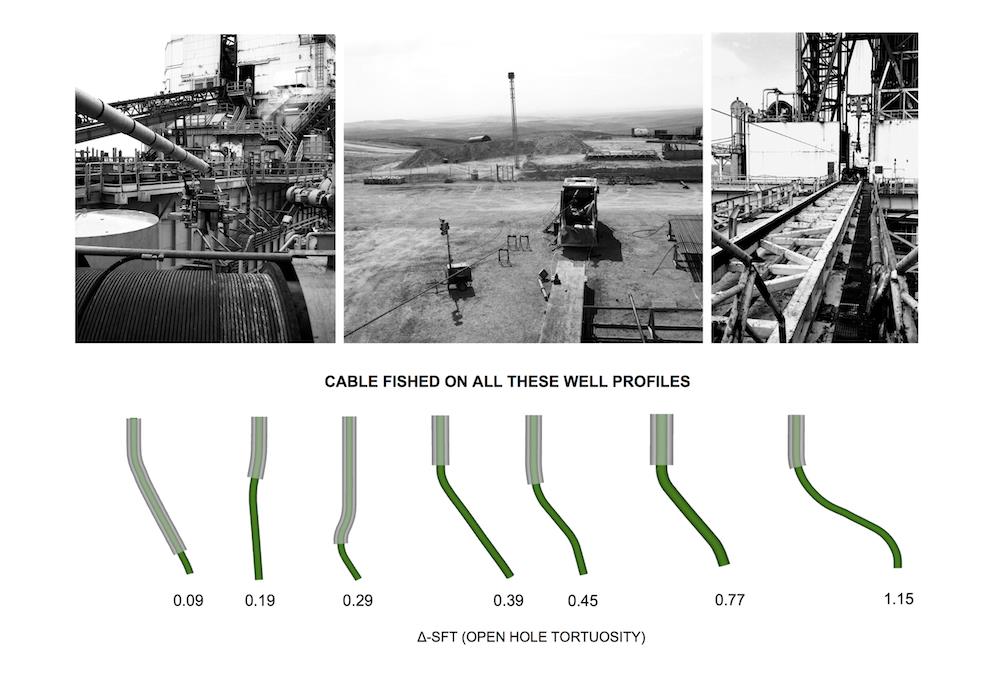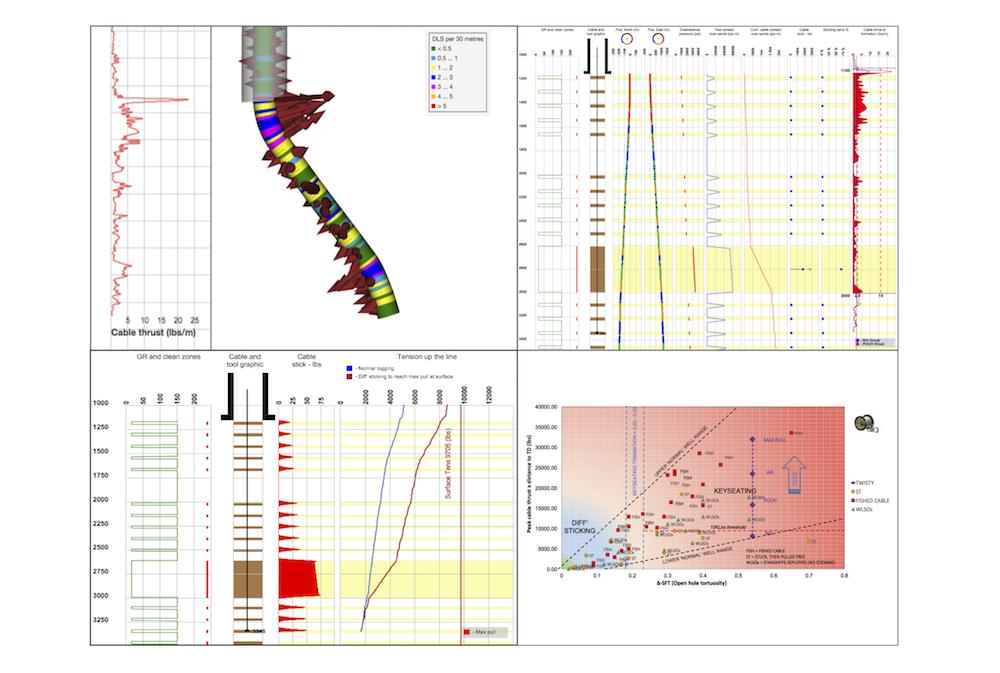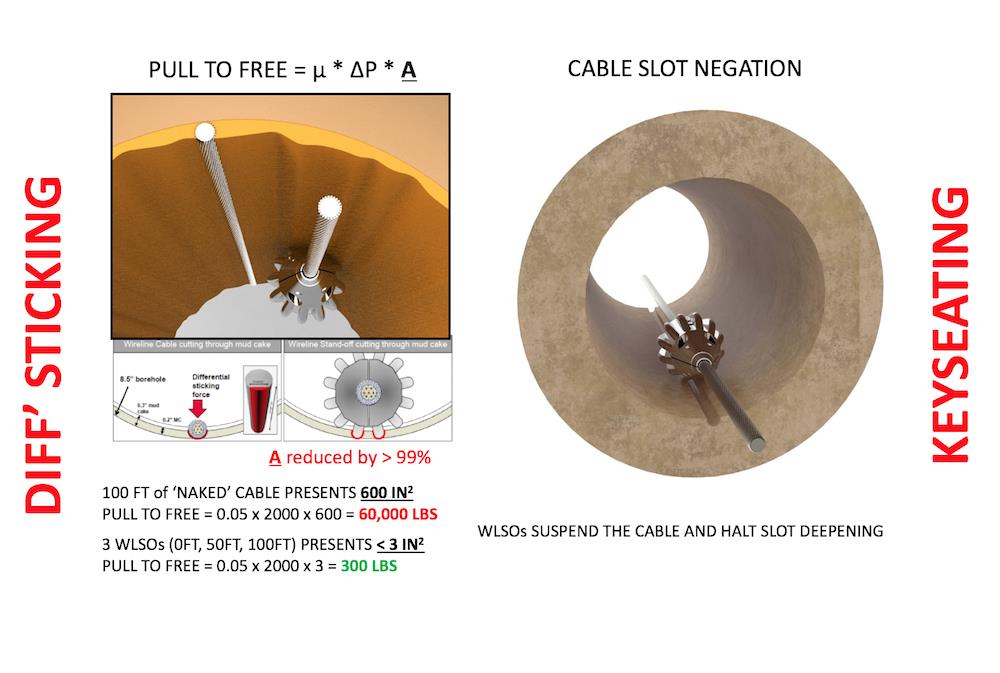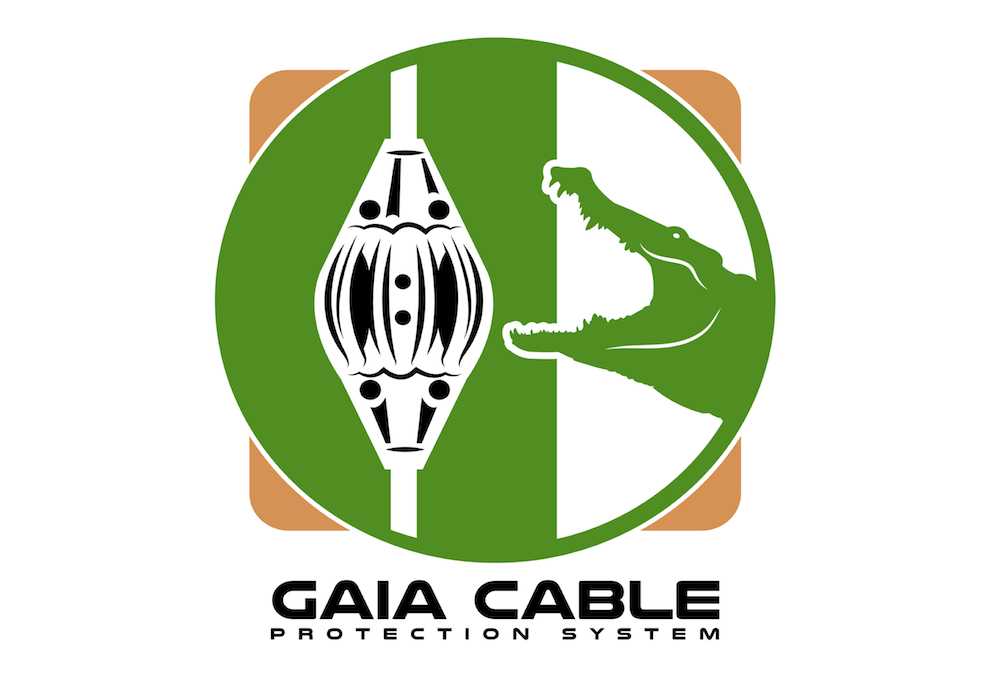MARKET
The demand for GCPS is influenced by three things:
a) The logging environment (wellbore trajectory & BHA, geology & mud, rock mechanics & pore pressures).
b) The wireline conveyance system, and any limitations it may possess (e.g. limited pull on land as opposed to high tension logging systems offshore).
c) The client's desire to minimize their operational & financial risks.
The baseline requirement for cable sticking risk is a tortuous open hole section: a distinct change in hole deviation or azimuth from the Casing Shoe to TD. A deviated but straight open-hole section does not generally create sticking risk unless there is concern over differential sticking over upper (exposed) sands when deep sampling.
Any well with offset cable sticking experience
Tortuous wells with soft formations over the build/drop zones
Moderately tortuous wells with permeable sands (esp. depleted)
Wells with long OH sections (build/drop outside the CSG shoe)
Deepwater jobs & soft formations: risk of pulling too much
Land jobs: risk of not pulling enough




